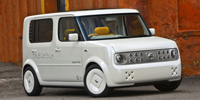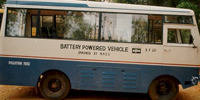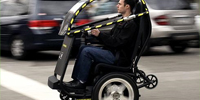Green Hydrogen
| Loan Quantum | Up to 70% of the project cost |
| Loan Period | • Up to 7 Years for manufacturing (in case of components in green hydrogen manufacturing value chain and Manufacturing of batteries) • Up to 80% of the concessionaire/ agreement period (in case of BESS, Projects involving production of green hydrogen and its derivatives and Fuel Cells). In any case, repayment period should not be more than 20 years under the scheme and total loan be amortized within 80% of the useful life/concession period |
| Moratorium Period | Up to 1.5 years. |
| Securities | (a) mortgage of immovable property via title deed deposit or other legally accepted methods; (b) hypothecation of all movable assets including machinery, equipment, vehicles, furniture, and fixtures—both existing and future acquisitions; (c) charge over the project's entire cash flow stream, including revenues, receivables, and book debts from all sources; (d) assignment of applicable rights; (e) establishment of Debt Service Reserve Account (DSRA) per current guidelines; (f) creation of Trust and Retention Account (TRA) or Special Bank Account for direct appropriation of sale proceeds and concession revenues toward loan servicing; and (g) any additional security as mandated by IREDA guidelines. IREDA may permit working capital lenders to maintain reciprocal charges on current and fixed assets up to the working capital facility limit, 20% of the loan amount in the form of BG/ FD, Commercial Property/ Residential Property, as per requirement based on project strength e) Any other as per IREDA guidelines |
| Interest Rate | As per the Interest rate matrix, revised from time to time and updated on IREDA’s Website. |
| Sl. No. | Name | Designation | Email Id | Mobile No. |
| 1 | Rajneesh Rai | Deputy General Manager | 011- 24347729-99 |
rajneesh[at]ireda[dot]in |
| 2 | Shekhar Gupta | Senior Manager | 011- 24347729-99 |
shekhargupta[at]ireda[dot]in |
| 3 | Saurabh Garg | Senior Manager | 011- 24347729-99 | saurabh@ireda.in |
Fuel cells work like batteries, but they do not run down or need recharging. They produce electricity and heat as long as fuel is supplied. Fuel cells are the most energy efficient devices for extracting power from fuels. Capable of running on a variety of fuels, including hydrogen, natural gas, and biogas, fuel cells can provide clean power for applications ranging from less than a watt to multiple megawatts. A fuel cell consists of two electrodes, a negative electrode (or anode) and a positive electrode (or cathode), sandwiched around an electrolyte.
Fuel cells can be used in a wide range of applications, including transportation, material handling and stationary, portable, and emergency backup power. Stationary fuel cells can be used for backup power, power for remote locations, distributed power generation, and cogeneration (in which excess heat released during electricity generation is used for other applications). Fuel cells can power almost any portable application that typically uses batteries, from hand-held devices to portable generators.
Fuel cells directly convert the chemical energy in hydrogen to electricity, with pure water and potentially useful heat as the only by-products. Hydrogen-powered fuel cells are not only pollution-free, but also can have more than two times the efficiency of traditional combustion technologies.
Fuel cell vehicles, which use electric motors, are much more energy efficient. The fuel cell system can use 60% of the fuel's energy, corresponding to more than a 50% reduction in fuel consumption compared to a conventional vehicle with a gasoline internal combustion engine.
The benefits of fuel cells are:
Battery Powered Vehicles



Background
The important issues of concern today are environmental pollution and energy conservation. In India, these issues are more significant, in view of the alarming rise in pollution levels due to automobiles in the metropolis and the need to conserve fast depleting oil resources. The need for use of Electric Vehicles (EV) has been well recognised. A significant step in this direction has been the introduction of Battery Operated Vehicles (Electric Vehicles), which are pollution free, eco-friendly with zero emission. Unlike the conventional cars that use petroleum fuels to power internal combustion engines, the electric car is run by a direct current electric motor powered by a rechargeable battery pack. Electric vehicles are used today in sizeable numbers for specialised applications, viz., industrial, recreational, road transports.
Objective of the Scheme
To promote, support, accelerate the development and rapid commercialisation of Battery Powered Vehicles, as an alternative to petrol/diesel operated vehicles, by providing financial and technical assistance to the prospective developers.
Socio-Economic and Environmental Benefits
The running of Battery Powered Vehicle is not only pollution free but eco-friendly too and yields benefits such as
May please refer to IREDA Financing Guidelines available.
Further, the details related of Government support/incentives/policy if any, may be obtained from MNRE website.
Electric Mobility Segment
| Loan Quantum |
It varies from project to project and risk perception. However, IREDA loan quantum goes upto 80% of the appraised project cost in case of EV Fleet & Charging Infrastructure proposals and 70% in case of EV Manufacturing facilities.
|
| Loan Period |
|
| Moratorium Period | For EV Manufacturing facilities - upto 1.5 years For EV Fleet/ Charging Infra - upto 1 year |
| Securities | Mortgage of immovable assets, Hypothecation over movable properties and assets, including plant & machinery, Charge on project cash flows/receivables, 2 Quarter DSRA etc. However, one or more additional securities such as Collateral security equivalent to 10% of the loan amount, Corporate and/or Personal Guarantees, Pledge of shares (minimum 51%) of the applicant company, 3rd party Guarantee, Deposit of PDCs / NACH, Demand Promissory Note, BG/FDR for not less than 10% of loan etc., are also obtained based on risk perception and as per financing norms of IREDA. |
| Interest Rate | As per the Interest rate matrix, revised from time to time and updated on IREDA’s Website. |
Smart Metering/ Advanced Metering Infrastructure Segment
| Loan Quantum | Upto 75% of the project cost |
| Loan Period | Upto 80% of the contract period with DISCOMs |
| Moratorium Period | Upto 12 months |
| Securities | Hypothecation over movable properties pertaining to smart meter project, Charge on project cash flows/receivables/ escrow account, 2 Quarter DSRA, assignment of project documents, Corporate and/or Personal Guarantees, Pledge of shares (minimum 51%) of the applicant company, Deposit of PDCs / NACH, BG/FD, Commercial Property/ Residential Property to the extent of 15% of the loan amount etc. as per IREDA guidelines (mandatory for the cases where DDF Agreements are not available) based on risk perception and as per financing norms of IREDA. |
| Interest Rate | As per the Interest rate matrix, revised from time to time and updated on IREDA’s Website. |
Battery Energy Storage Systems (BESS)
Battery Energy Storage Systems (BESS) are sophisticated electrochemical technologies that capture and store electrical energy from renewable sources like solar and wind, enabling deployment when generation is low or demand peaks. India's BESS market is currently valued at USD 7.8 billion (₹65,130 crore) in 2024. The operational landscape has transformed dramatically, with installed capacity surging from 51 MWh in 2023 to 442 MWh by December 2024, while the Central Electricity Authority projects requirements of 74 GW/411 GWh by 2032 to support India's ambitious 500 GW non-fossil fuel capacity target. This expansion is supported by substantial investment commitments of ₹4.79 lakh crore (USD 57 billion) and government initiatives including Viability Gap Funding covering up to 40% of capital costs.
BESS technology delivers critical advantages for India's energy security and renewable integration objectives, particularly addressing the nation's 88.1% oil import dependency while enabling efficient utilization of domestic renewable resources. The systems provide sub-second frequency response capabilities essential for grid stability, facilitate peak load management with potential industrial savings of 40-45% through Time-of-Day optimization, and enable rural electrification through solar microgrids in remote areas. Most importantly, BESS serves as the cornerstone for enhancing renewable energy penetration by enabling time-shifting of variable solar and wind generation, transforming intermittent sources into dispatchable firm power capable of round-the-clock supply. BESS has become economically viable as the critical technology bridging India's renewable energy potential with reliable grid operations, positioning the nation to achieve its 2030 clean energy targets and 2070 net-zero commitments.
| Sl. No. | Name | Designation | Email Id | Mobile No. |
|---|---|---|---|---|
| 1 | Koushik Goswami | Koushik Goswami | Koushik Goswami | 911124347729 |
| 2 | Poorva Mathur | Chief Manager | sharmapoorva@ireda.in | 911124347729 |
| 3 | Abhishek Kumar | Senior Manager | abhishekkumar@ireda.in | 911124347729 |
| 4 | Naman Rawat | Manager | namant@ireda.in | 911124347729 |
| 5 | Anoop kumar Singh | Manager | anoopkumar@ireda.in | 911124347729 |